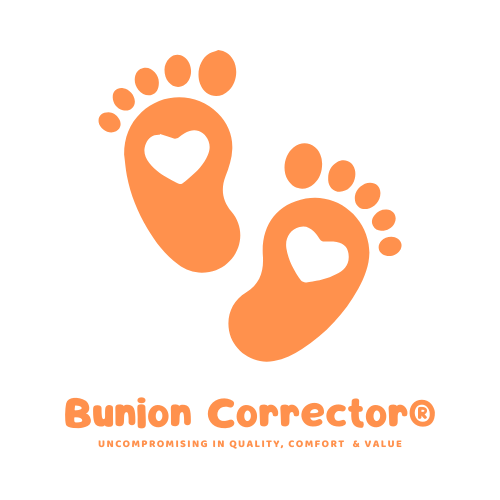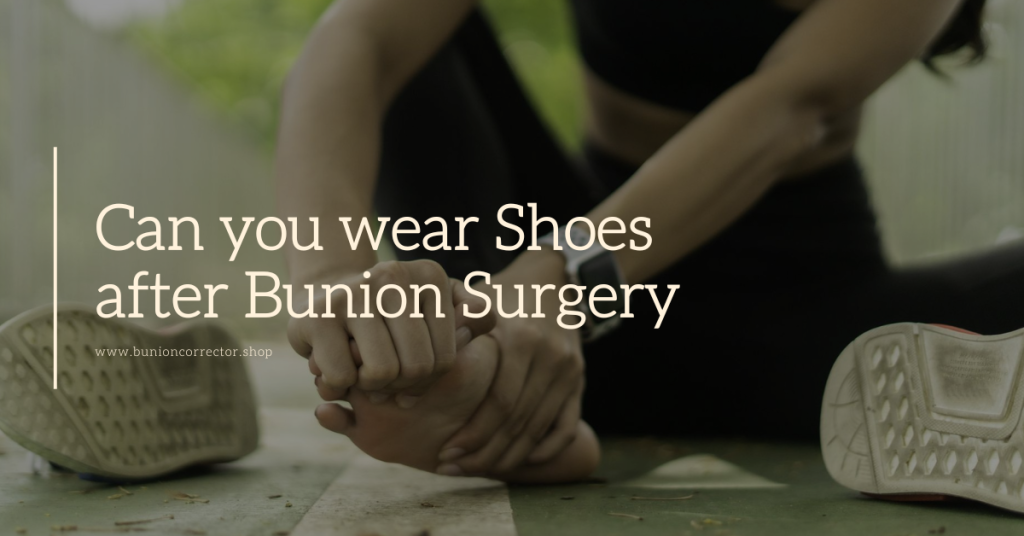Can You Wear Shoes After Bunion Surgery? If you’re considering bunion surgery or have just had the procedure done, one of the most common concerns is when you’ll be able to wear regular shoes again. Bunion surgery, also known as bunionectomy, is a procedure designed to correct the deformity of the big toe joint. Knowing how long recovery takes and what shoes are safe to wear during each stage of your healing process is essential.

This post will explain everything you need about wearing shoes after bunion surgery. From the recovery timeline to selecting the best footwear, we’ve covered you with all the helpful tips you need.
What Happens During Bunion Surgery?
Understanding Bunions
Before diving into post-surgery footwear, it’s essential to have a basic understanding of what a bunion is. A bunion forms when the significant toe shifts toward the second toe, causing a bony bump to develop on the side of your foot. This can cause pain, discomfort, and difficulty finding comfortable shoes.
Types of Bunion Surgery
There are different types of bunion surgery, but each goal is the same: to realign the bones in your big toe and reduce the bunion. The specific surgery you undergo will depend on the severity of your bunion and your doctor’s recommendations. Some common types include:
- Osteotomy: Involves cutting and realigning the bones.
- Exostectomy: The surgeon removes the bunion without realigning the toe.
- Arthrodesis: This procedure fuses the bones of the big toe joint.
Can You Wear Shoes After Bunion Surgery? Regardless of your surgery type, the recovery period will influence how and when you can wear shoes again.
When Can You Wear Shoes After Bunion Surgery?
Immediate Post-Surgery Period
Right after surgery, your foot will be bandaged, and you may be required to wear a surgical shoe or boot. This particular footwear protects your foot and allows for proper healing. During the first few weeks, you’ll need to avoid putting too much pressure on your foot and will likely use crutches, a walker, or a scooter.
At this stage, regular shoes are out of the question. Following your surgeon’s advice is essential to prevent complications and ensure that your foot heals correctly. Depending on how fast your body heals, you’ll likely wear a surgical boot or post-op shoe for about 6 to 8 weeks.
Transitioning to Regular Shoes
After your initial recovery, your doctor will tell you when it’s safe to start transitioning back into regular footwear. The timeline for this transition can vary from person to person, but generally, you can wear comfortable, supportive shoes around 6 to 12 weeks post-surgery. However, it’s crucial to:
- Listen to your body: Wear regular shoes if your foot still feels swollen or tender.
- Choose the proper footwear: Opt for shoes that provide ample room in the toe box, good arch support, and soft materials to prevent irritation.
Swelling and Foot Size Changes
It’s important to note that your foot may still be swollen even after 8-12 weeks. Swelling can persist for several months, so be prepared for your shoes to fit differently. Size up or opt for adjustable shoes like sandals with straps that can accommodate swelling.
Full Recovery Timeline
It can take six months to a year for your foot to fully heal after bunion surgery. During this period, it’s crucial to wear comfortable and supportive shoes that help maintain the alignment of your foot. Can You Wear Shoes After Bunion Surgery? Avoid high heels, narrow shoes, or any footwear that puts pressure on your toes.
Best Shoes to Wear After Bunion Surgery
- Supportive Athletic Shoes
Athletic shoes are often the best option once you’ve reached the point where you can wear regular shoes. They provide excellent cushioning, arch support, and a spacious toe box. Look for shoes designed for walking or running, as these often have soft, breathable materials and shock-absorbing soles.
- Orthopedic Shoes
Orthopedic shoes are specially designed to provide support and relieve pressure on the feet. Many people find these shoes extremely helpful after bunion surgery, as they offer extra depth and a wide toe box to accommodate any swelling or changes in foot shape.
- Sandals with Arch Support
If you’re recovering during warmer months, wear sandals. Choose sandals with adjustable straps and built-in arch support. Brands focusing on comfort and support will provide better post-surgery relief than flip-flops, which can worsen foot pain.
- Custom Orthotics
Custom orthotics can be inserted into your shoes for extra support and cushioning. Your doctor may recommend these if you need additional help maintaining the correct alignment of your foot after surgery. They can be handy for long-term recovery and ensuring your bunion doesn’t return.

Shoes to Avoid After Bunion Surgery
Even after you’re cleared to wear regular shoes, there are certain types of footwear you should avoid to protect your feet and prevent a recurrence of the bunion:
1. High Heels
Heels are a no-go after bunion surgery, especially during the first year of recovery. High heels place excessive pressure on the front of the foot and can undo the alignment achieved during surgery. If you must wear heels, opt for shallow ones with a wide toe box, but it’s best to avoid them altogether during recovery.
2. Narrow or Tight Shoes
Shoes that pinch your toes or have a narrow toe box can aggravate your foot, leading to discomfort and potentially causing the bunion to return. Can You Wear Shoes After Bunion Surgery? Always choose shoes that give your toes ample space to move and breathe.
3. Flip-Flops
While it might be tempting to wear flip-flops for ease, they don’t provide the arch support or protection your recovering foot needs. Stick to sandals or shoes with more structure and support to prevent foot pain.
Tips for a Smooth Recovery
- Follow Your Doctor’s Advice
Every foot is different, and recovery timelines can vary. Always follow your surgeon’s specific advice regarding when to wear shoes and what types are best for your healing foot.
- Elevate and Ice Your Foot
During the first few weeks of recovery, keep your foot elevated to reduce swelling. Icing the area helps speed up the healing process.
- Stay Active, But Don’t Overdo It
Staying mobile during your recovery is essential, but don’t push yourself too hard. Follow your doctor’s guidelines for walking and exercise, and be patient with your body as it heals.
- Gradually Ease Back Into Regular Shoes
Take your time with wearing your old shoes. Gradually ease into them, starting with short periods and increasing as your comfort allows.
Conclusion
Wearing shoes after bunion surgery is a gradual process, and it’s essential to prioritize your foot’s comfort and support during recovery. From wearing a surgical boot to transitioning into supportive footwear, give yourself time to heal correctly. Can You Wear Shoes After Bunion Surgery? By following your doctor’s guidance and selecting the right shoes, you’ll be back on your feet without sacrificing comfort or risking further injury.